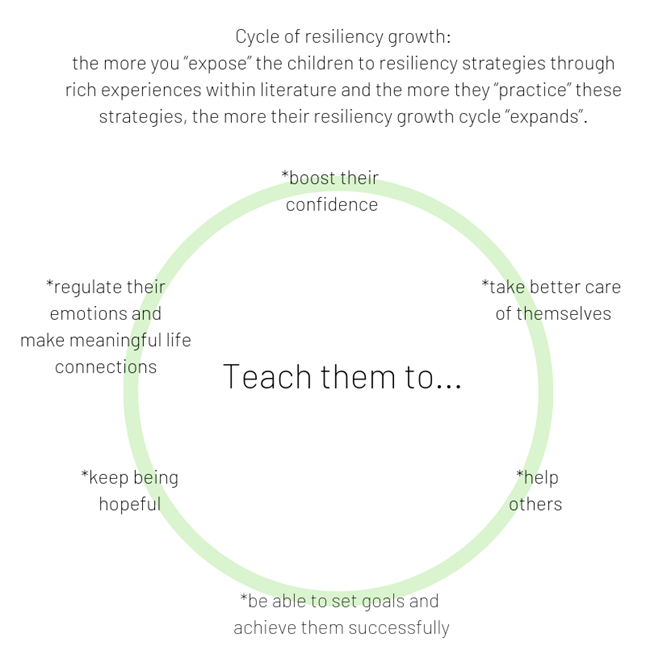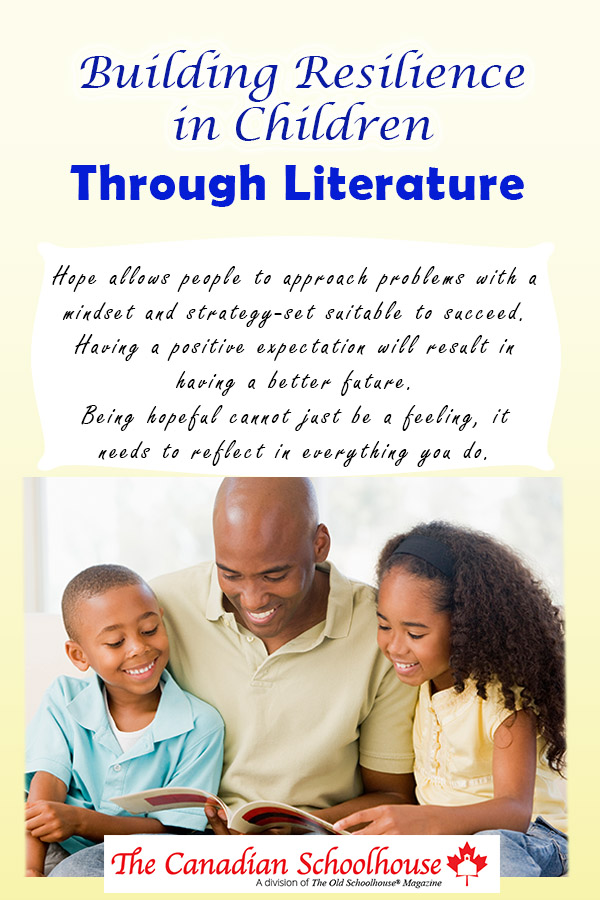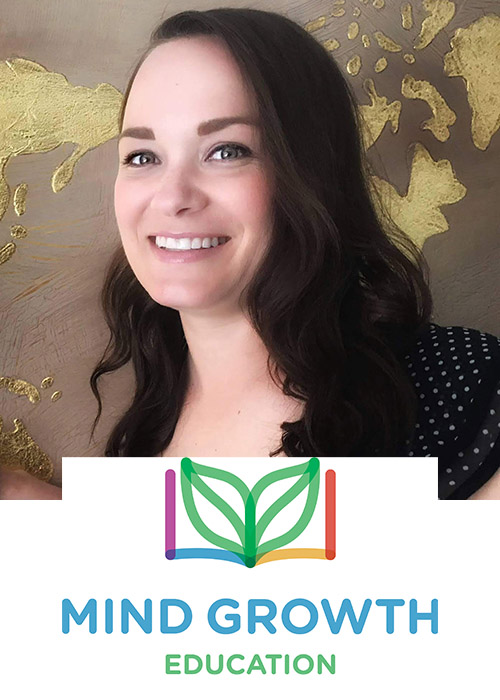

by Isabelle Baril, founder of Mind Growth Education
Did you know?
The definition of resiliency is “[the] ability to recover quickly from disruptive change, or misfortune without being overwhelmed or acting in dysfunctional or harmful ways.”1 I’ll just start by saying that building resilience in children, especially your own, can be very difficult emotionally, frustrating at times, but very rewarding in the end whether it be allowing your child to fail versus doing it yourself to ensure protection. But how can you build resiliency through reading? What is the connection?
To begin, ask yourself “How do we build children to become more resilient leaders, entrepreneurs, parents, and individuals who contribute to society?” Through exposure to rich experiences with literature. My teaching philosophy is to make sure at the end of the year, my students would leave my classroom with a toolkit of ways/strategies to evolve in being the best version of themselves and most of those strategies revolved around resiliency and perseverance. Those two words, in my opinion, go hand in hand.
The definition of perseverance is the following: “Continued effort to do or achieve something despite difficulties, failure, or opposition.”2 What I realized is that the most effective way to instill those strategies, a new mindset into their brains, was by reading them books and stories that promote resilience in which the characters show us they are facing their problems and overcoming obstacles.
Examples of Teaching Opportunities
Below are some of the ways/strategies I would teach my students and my own children, making sure they were implementing these on a daily basis in my classroom or at home. I’ve also added a list of recommended books that go well with the resiliency strategies being taught.
First, I would start off the year by teaching a lesson about the difference between a small problem and a big problem. This lesson introduced my students to how to regulate their emotions during certain situations faced as a child, such as going through a divorce, moving to a new neighbourhood, having to make new friends, getting cut from a sports team, failing your driver’s license, etc. thus making meaningful personal life connections.
This particular lesson is available at the following link: https://mindgrowtheducation.com/product/small-or-big-problem-scoot-game/
Second, I would make sure my students would have plenty of opportunities to help others, such as being a big buddy to another younger student and helping them with reading or writing or even just playing. As a teacher who would sign my students up when volunteering opportunities arose such as at the soup kitchen, events happening within the school or around the neighbourhood, etc., helping others has a huge impact on your self-esteem, your outlook on life, building character to help others, etc.
Thirdly, I taught a few lessons throughout the year on self-care. These lessons would consist of having discussions about eating healthier, getting regular exercise, wearing clothes you like, taking breaks and relaxing, or simply just having the constant thought of maintaining a healthy relationship with yourself.
The Cycle of Resiliency Growth
Also, at the beginning of every week as a group, we would set academic and personal goals. At the end of the week, we would see who achieved them, why they achieved them, who still needs to achieve their goal (never say “you did not achieve them” as trying to achieve a goal is part of a movement towards a goal) and revise our goals for the upcoming weeks.
It takes hard work and is sometimes easy to achieve but can be harder depending on the actual goal if it is realistic or not within our weekly timeframe. Either way, we’d have a reflection discussion about why some were achieved, why some weren’t achieved YET and how were they feeling about their week. This discussion was very important to me as I got to be their brain facilitator, asking the hard questions and applauding their emotions, their resiliency, their perseverance towards what one might call failure but what I called “the cycle of resiliency growth.”
Finally, keep being hopeful. Hope allows people to approach problems with a mindset and strategy-set suitable to succeed. Having a positive expectation will result in having a better future. Being hopeful cannot just be a feeling, it needs to reflect in everything you do. This strategy ties in well with setting academic and personal goals because they both gear yourself to a better future. (i.e. Setting an academic and personal path to become a nurse and being hopeful you will one day be a nurse will make you persevere until you reach that goal which results in a better, happier future.)
Connecting Reading and Resiliency
Teaching the skills to be a resilient person comes in all shapes and forms, so how does reading and resiliency connect at all? Well, I see it more like the “cycle of resiliency growth” that I’ve mentioned before; the more you expose the children to resiliency strategies through rich experiences within literature and the more they practice these strategies, the more their resiliency growth cycle expands. In my role as an educator, this constant exposure results in high reading achievement and resilient children, a great outcome to being the best version of themselves. (See image below)

In conclusion, insufficient exposure to rich experiences with literature about resiliency, perseverance, hopefulness, goal setting, self-care, regulating emotions, making meaningful life connections, etc. may lead to the inability for children to become more resilient leaders, entrepreneurs, parents, and individuals who may lead to having mental health issues later on.
So, expose your children to resiliency on a daily basis which will result in having a positive impact on their lives.
Below are my recommendations of books that are related to the resiliency strategies described above:

For the small/big problem strategy
Resilience: A Book to Encourage Resilience, Persistence and To Help Children Bounce Back from Challenges and Adversity by Jayneen Sanders and Sofia Cardoso
For the helping others strategy
The Biggest and Brightest Light: The Magic of Helping Others by Marilyn Perlyn and Amanda Perlyn
For the self-care strategy
I Am Peace: A Book of Mindfulness by Susan Verde and Peter H. Reynolds
For the goal setting strategy
I Want to Be a Lot by Ashley Savage and Genesis Kohler
For the hope strategy
A Flicker of Hope by Julia Cook and MacKenzie Haley
References:
- Resiliency Center. https://resiliencycenter.com/resiliency-definitions/. Retrieved on October 7th, 2019.
- Merriam-Webster Online Dictionary. https://www.merriam-webster.com/dictionary/perseverance. Retrieved on October 7th, 2019.
 Isabelle Baril has two beautiful children, 7-year-old Ayla and 5-year-old Hudson. She has called a few places home across Canada, including Quebec and Ontario, but currently resides, with her husband Devin, in Parkville on Vancouver Island in British Columbia. She has held various roles in the education field, but is currently raising her family and running her business, Mind Growth Education. Her educational achievements include graduating from the University of British Columbia, in Vancouver, BC, with a Teaching Degree in Social Studies and Special Education, and obtaining an undergraduate degree in Geography and French from Laurentian University in Sudbury, Ontario. She has always had a strong passion for helping others, which led her to her teacher career and starting Mind Growth Education.
Isabelle Baril has two beautiful children, 7-year-old Ayla and 5-year-old Hudson. She has called a few places home across Canada, including Quebec and Ontario, but currently resides, with her husband Devin, in Parkville on Vancouver Island in British Columbia. She has held various roles in the education field, but is currently raising her family and running her business, Mind Growth Education. Her educational achievements include graduating from the University of British Columbia, in Vancouver, BC, with a Teaching Degree in Social Studies and Special Education, and obtaining an undergraduate degree in Geography and French from Laurentian University in Sudbury, Ontario. She has always had a strong passion for helping others, which led her to her teacher career and starting Mind Growth Education.
















